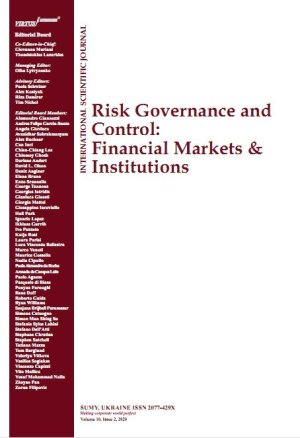
MACROECONOMIC VARIABLES AND FOOD PRICE INFLATION, NON-FOOD PRICE INFLATION AND OVERALL INFLATION: A CASE OF AN EMERGING MARKET
Download This Article
This work is licensed under a Creative Commons Attribution-NonCommercial 4.0 International License.
Abstract
The paper analyses the association between certain macroeconomic variables and food price inflation, non-food price inflation and overall inflation in Zimbabwe, and also seeks to determine the level of association between these variables, given food security implications and overall well-being of its citizens. The study reveals that during the 2010 to 2016 period, Zimbabwe experienced stable food prices—annual food price inflation for food and non-alcoholic beverages averaged a relatively low growth rate of 0.12% monthly, while non-food inflation monthly growth rate was 0.09% and overall inflation growth rate was 0.11%. Although inflation from 2010 had been declining, of late, the increase in annual inflation has been underpinned by a rise in non-food inflation. Zimbabwe’s annual inflation remains lower than inflation rates in other countries in the region. Despite the increases lately in overall inflation, it remained below zero in January 2016, mostly driven by the depreciation of the South African rand and declining international oil prices. It should also be noted that domestic demand continued to decline in 2015, leading to the observed decline in both food and non-food prices. While food inflation has remained relatively low, it should be noted that non-food expenditures is significant component of the household budget and the rising prices result often lead to declining purchasing power and force households to make difficult choices in terms of their purchases. The findings of the study are food inflation has a low association with the independent variables under study; Zimbabwe broad money supply, rand-dollar exchange rates and the South Africa food inflation. There is, however, a very strong association between non-food inflation and these independent variables, as well as between overall inflation and the independent variables. Given the mostly rural population and the high level of unemployment in Zimbabwe, it can be surmised that the distributional burden of the effects of rising non-food prices between 2009 and 2016 fell mostly on these vulnerable groups as they had the lowest disposable income. In addition, it can also be surmised that domestic production can cushion the impact of rising prices in general, particularly on food. A deliberate policy of increasing domestic food production would therefore go a long way in ensuring lower price changes of both food and non-food items.
Keywords: Dollarization, Exchange Rates, Money Supply, Food Prices, CPI, Zimbabwe, South Africa
Received: 08.12.2016
Accepted: 01.02.2017
How to cite this paper: Mpofu, R.T. (2017). Macroeconomic variables and food price inflation, nonfood price inflation and overall inflation: A case of an emerging market. Risk governance & control: financial markets & Institutions, 7(2), 38-48. https://doi.org/10.22495/rgcv7i2art4



















